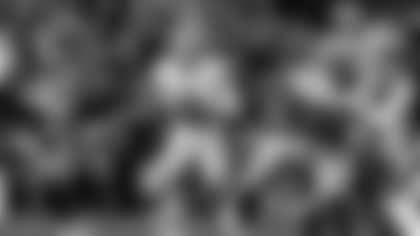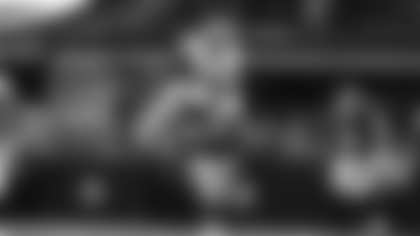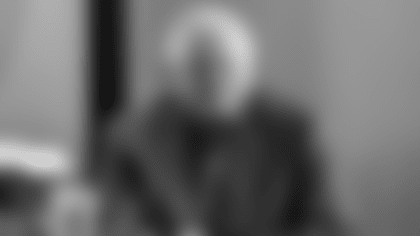It's nice to have things to rely on.
Overeating at holiday time. Mall traffic in December. Coach-speak.
Football coaches speak a language all their own. Some of it is the stuff of cliché on which we come to rely: "We have to run the ball, and stop the run." "I really won't know until I see the tape." "We have to be/were/weren't strong in all three phases."
Poor Coach can't help it if all those clichés are true. He says it every week and so do all his brethren at every level. They are such true statements that it becomes almost impossible to tell the story of any given game without them. But today, let's focus on one aspect of one of the clichés, probably the one given the shortest shrift. One that though frequently overlooked, can change games and make or break seasons.
It's the third phase.
When coaches talk about winning "in all three phases," they mean the three phases of a team: offense, defense and special teams. Offense and defense get all the attention. Mostly offense, mostly quarterbacks. Then receivers and runners. Every now and then a bone for the offensive linemen, who make it all possible. Then comes defense. Specifically, then come pass rushers and cornerbacks, who generate the sexy statistics, sacks and interceptions. Maybe a mention for a particularly hard-hitting linebacker or safety, a Sean Lee or Cliff Harris or Darren Woodson who changes a game's tenor with a big hit.
You don't see many commercials featuring special teams. Every now and then a Dan Bailey gets a biscuit. But in a league as even as the NFL, special teams can be the difference. They were for the Cowboys last week. It's probable that without special teams, all of them, the Cowboys struggle to win that game. If they do at all.
Let's just look at this one game. Up 10-0 the Cowboys are looking for an edge. Anything to get them going, jump-start the offense, separate them from a desperate Washington team. Up steps Ryan Switzer. The rookie who was supposed to change the Cowboys' offense and return game has battled injuries since training camp. Lately he's been close in the return game. Last week he had a sprained ankle, could not practice the week following Thanksgiving, wasn't sure he would be able to play Thursday night.
But the stars aligned. The blocks sustained. On a Washington second quarter punt, Switzer found a seam, made two moves and went blasting 83 yards to a touchdown that made it 17-0. Totally changed the game. First Cowboys' punt return touchdown in four years. It's not overreaching to say, as of this moment, that play might have saved or changed a whole team's season.
[embeddedad0]
Actually, Switzer's score made it 16-0. It took Dan Bailey's extra point to make it 17. Of course, Bailey made all of his extra points. And field goals. Heading into Week 14 of the 17 week season, Dan Bailey is the only kicker in the NFL to make all of his kicks. All the extra points. All the field goals. Everything. Dan Bailey puts the special in the Cowboys' special teams. He plays his position better than any other NFL player plays his position. Tom Brady, Julio Jones, Aaron Rodgers. Prove me wrong.
The Cowboys had a lead in this game, though, not just because of the offense and Bailey. In a still scoreless game in the first quarter, Kyle Wilber forced Washington returner Jamison Crowder to fumble a Chris Jones punt. In the ensuing scrum, long snapper L.P. Ladouceur, playing his 201st consecutive game in his 13-year Cowboys career, recovered the loose ball, his first ever recovery.
"Actually, I had one against Green Bay a few years ago, but it was erased by a penalty," he chuckled. "It felt great to get in there and get a hold of one."
In the meantime, for those of us not keeping track, that's 878 punt snaps, 555 extra points and 388 field goals without a miscue on a snap.
"He just always puts it back there perfectly," says holder and punter Chris Jones, who has known only Ladouceur spirals in his seven years in Dallas. "I never have to think about it."
Jones, however, gives opponents plenty to think about. He leads the NFL in percentage of punts downed inside the 20-yard line. His miss-hits are rare, and he ranks in the top 10 in net punting average. One reason for that: only two touchbacks in 50 punts.
And one reason for THAT is a coverage unit that gets down the field. On the possession following Ladouceur's fumble recovery last week, safety Kavon Frazier was waiting at the Washington 1-yard line to down Jones' punt. Second time this year Frazier has done that, and rookie Xavier Woods has done it once. Frazier, by the way, leads the team in special teams tackles. Wilber is one behind him. Wilber doesn't play in as many defensive packages as he used to, but he's on every special team. So is linebacker Damien Wilson. Most of these guys never get a thought or a mention, except from special teams coordinator Rich Bisaccia, but they're critical.
Some statistics in football are misleading. When you see a team's official ranking on offense or defense, for instance, that's based on total yardage. Not points or first downs or turnovers, just yards. Yards are nice and everything, but they can tell a misleading story.
Here are some that are less misleading and more meaningful: Dallas this week is fourth in kickoff return average and 10th in punt returns. Even better, they're number one in opponent's punt return average. Ask Dak Prescott and Scott Linehan if it helps playing offense when you know if you don't score, if you'll just get the ball to midfield, your punt team will flip the field for you. That's how you win field position, and usually if you win field position, you've got a great chance to win the game.
For most of Tom Landry's coaching career, there was no such thing in the league as a special teams coach. Different staff members handled different areas of the kicking game. Landry worked with the punters because he was one. Along the way, all that changed. Special teams are a big deal now. As is fitting.
As the Cowboys reminded last week, sometimes the third phase is first.














